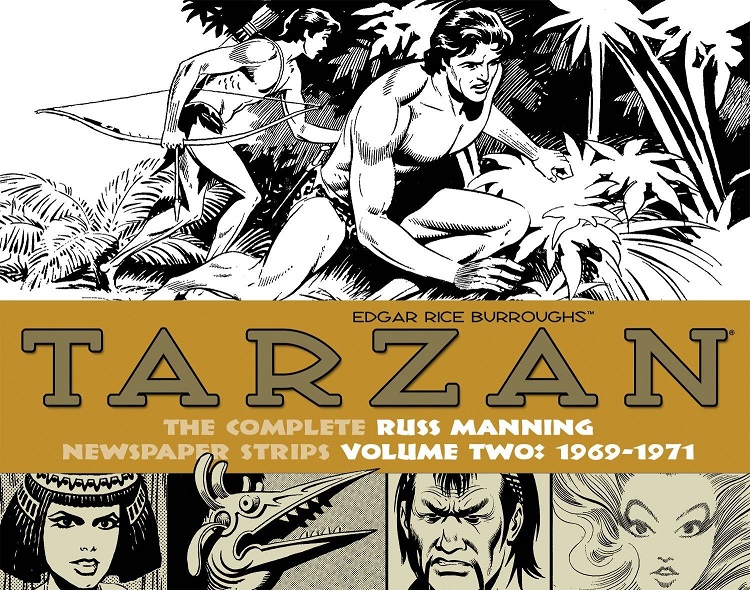
The second installment of Russ Manning’s complete Tarzan newspaper strips from what will be a four-book series published by the Library of American Comics and IDW Publishing finds the artist at the top of his game, creating captivating adventures accompanied by outstanding illustrations, just as he had been with the work that appears in Volume One.
Henry G. Franke III, editor of literary society The Burroughs Bibliophiles, has written the introductory piece that provides Manning’s history with the character, as a fan reading most of the Tarzan books while in high school, and as an artist drawing the Gold Key Tarzan of the Apes comic book. The best parts are the inclusion of Manning’s words, which offer great insight into his creative process.
The five stories from the dailies appeared from October 29, 1969 through March 31, 1971. Manning shows trust in himself as a writer and in his audience with “Korak’s Story (The Gryf Worshippers),” which finds Tarzan and Jane’s son in the lead as the young man finds his friend, Ab, and other young Ho-don kids rebelling against authorities of the city of Tal-lur. Although set in a fictional city in Africa, the story felt influenced by the youth movement of the late ’60s in the United States. “The Magii of Pal-ul-don” finds Tarzan using science to outsmart the “magic” of people keeping his friends captive. In a nice touch, events from the previous story have an impact on events here.
In “Tarzan and the Stone Pharaoh,” Tarzan gets lost in the desert and may have travelled back in time to Ancient Egypt. “Tarzan and the Pashi Ronchi” is not an accurate title and not because it’s misspelled on the table-of-contents page. After finding Tarzan in the desert, Korak tells him about his interaction with the Pashi Ronchi, a rebel leader against the government, which occurred concurrently while Tarzan was away. “Tarzan and the Cult of the Mahar” finds Manning referencing Burroughs’ Pellucidar series, first appearing in At the Earth’s Core.
The five stories from the Sundays appeared from May 18, 1969 through January 17, 1971. Manning provides some character history when he reveals “How Tarzan Met [his wife] Jane” and “How [French Naval Officer] Paul D’arnot Met Tarzan.” In a story set at a later date, D’arnot is a French Intelligence Officer when he appears in “Tarzan and the Slavers.” The Lord of the Jungle has to help some lost travellers during “Tarzan and the Safari to Opar.” “Korak and the River of Time” finds the strip veer from adventure to fantasy as the titular mystical waterway has the power to steal a person’s lifetime and pass those years onto someone else. This is the only weak story in the collection as the magic requires no explanation; it just exists and does what it needs to.
Manning demonstrates amazing talent with his art. His framing of panels is frequently interesting and filled with extras bits of business that help flesh out the reality of the world. The drawings feature great linework and his inks stand out when used to create darkness or shadows. The Sundays feature dynamic color and the art is at its best when he make use of larger panels.
After reading Tarzan: The Complete Russ Manning Newspaper Strips, Volume One, I became a big fan of the work and of Manning. After reading Volume Two, I find my opinion unchanged because the the strips are of such high quality.